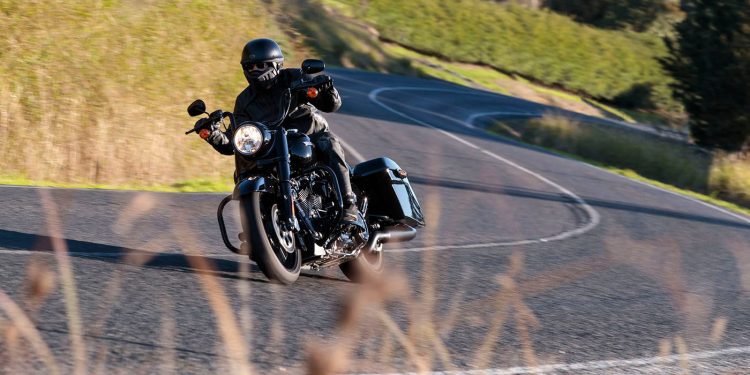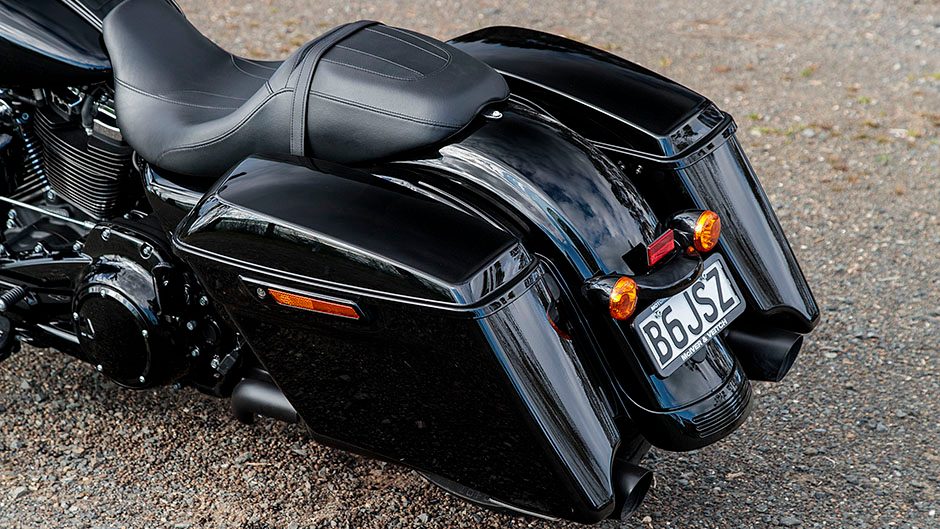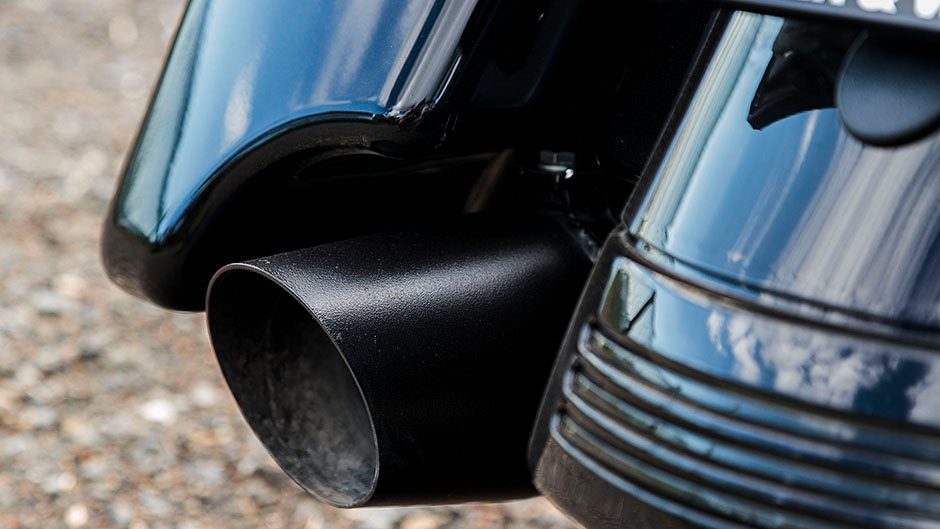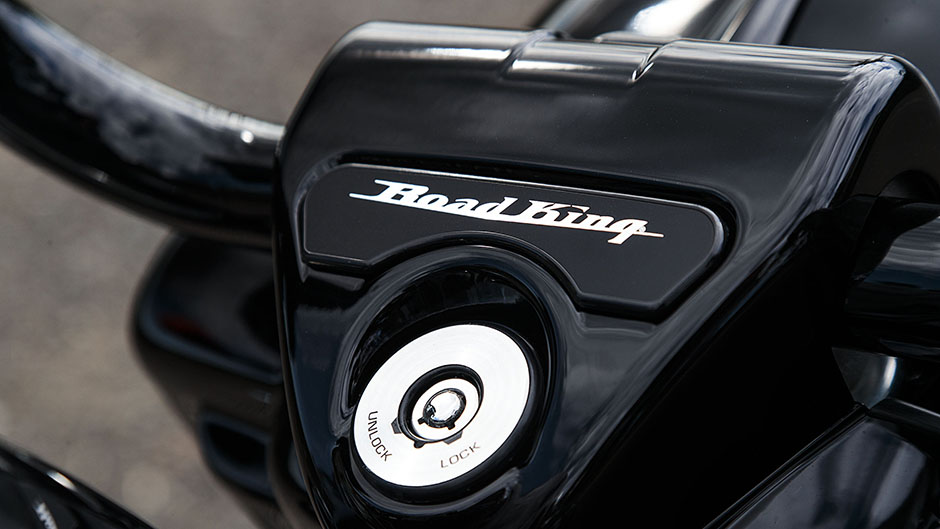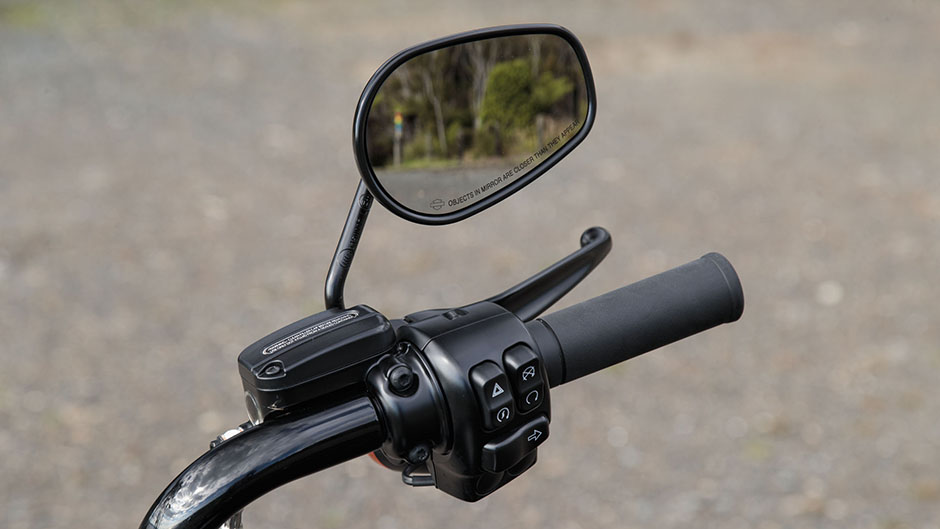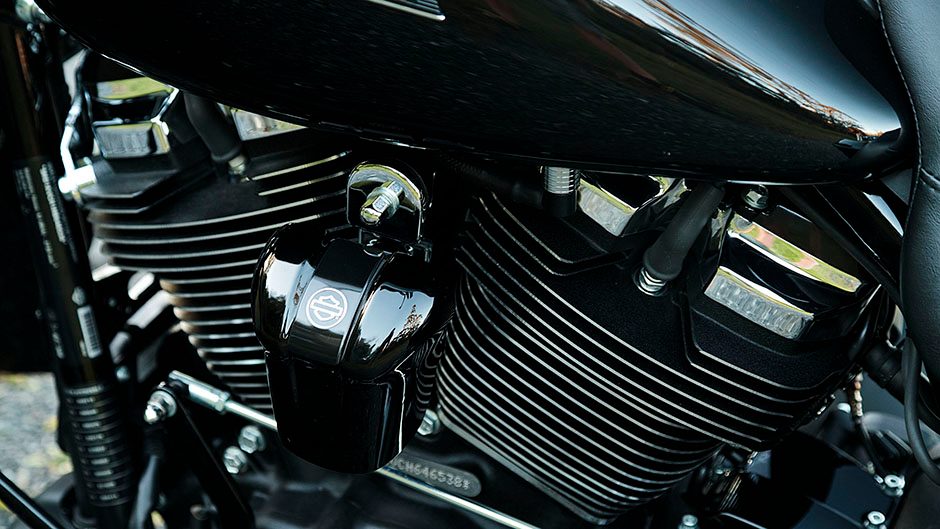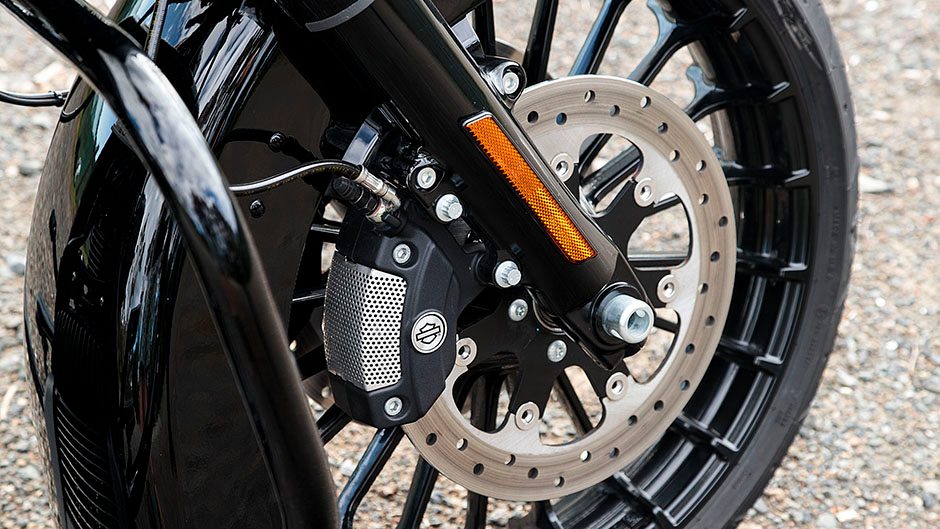2017 Harley-Davidson Road King Special review
Words Peter Louisson | Photos Tom Gasnier
The Road King has long been one of Harley’s staple cruiser-tourers. So where does the sportier Road King Special fit in the line-up? And how’s that new Milwaukee-eight engine?
The best laid plans of mice and men, and all that. After much organisational to-do, the day finally arrived when we were to uplift, not literally, the Harley-Davidson Road King. This was to be my first taste of Harley’s vaunted new Milwaukee-Eight 107 (cubes) engine. A host of H-D’s bikes were in New Zealand for the Iron Run.
I was to ride the Road King afterwards, but on pick up I was informed it had been sold. However, after some fast and furious phone calls we would instead be riding a Road King Special, Harley’s latest addition to its ranks. All good then. Both bikes are big cruisers, the RK optimised for touring thanks to its big wind-jamming screen, whereas the RK Special is more a custom bagger, for shorter day trips.
They share the same frame and mechanicals but the Special has a slammed rear end, no wind protection, and is black to the bone; even the cast aluminium wheels are gloss black, a 19-incher gracing the front, whereas the RK is resplendent in chrome. The signature look for the Special is the blacked out headlamp nacelle and forks. It also sports mini-ape hanger bars for a more aggressive riding position.
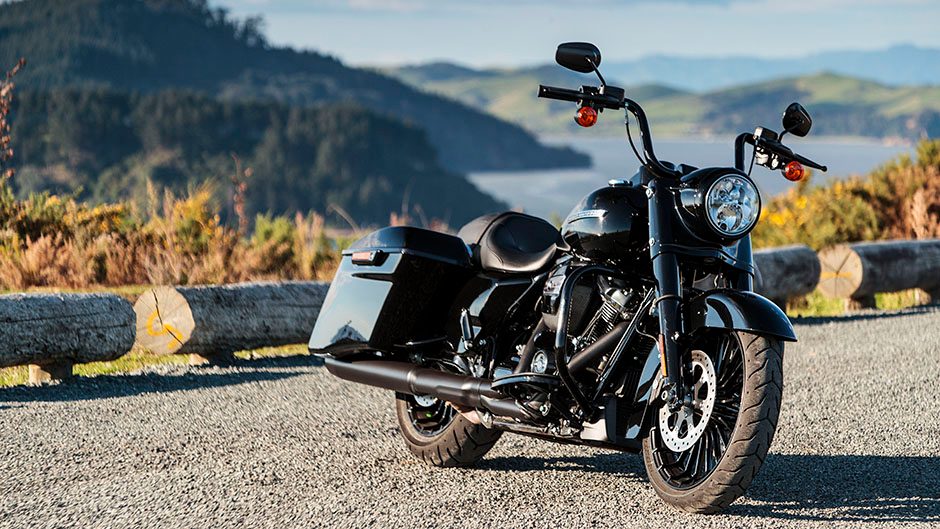
The RK costs much the same as the Flying Fortress, $37,495, whereas the RK-Special goes for $37,995, ride-away pricing.
Both the Harleys share the new engine, blacked out in the case of the Special. It was developed to counter the Indian’s Thunderstroke III V-twin. The MW-Eight produces 10 per cent more power – figure not quoted – and 150Nm of torque at 3250rpm. Displacing 1745cc, the 45-degree oil-cooled V-twin has eight valves.
New concepts include a ride-by-wire throttle, dual-plug heads, an engine balancer shaft, uprated clutch and Euro4 emissions status. Supposedly there’s better throttle response – crisper, cleaner, smoother – purer sound, and smoother operation. Acceleration is said to be roughly 10 per cent up, no numbers given, and “several bike lengths quicker” on an overtake, which is meaningless. We use seconds as measured by GPS devices to get an accurate idea of time exposed to danger while passing.
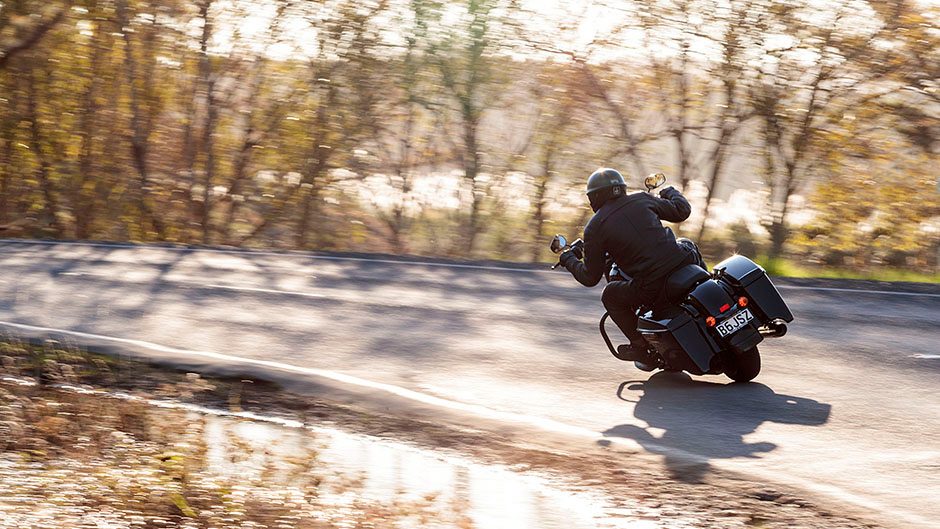
The six-speed gearbox is also improved, and that’s apparent within 50m. Shifts are now so much sweeter; no longer do you have to be holding your tongue just so, hesitating for a moment while engine revs drop away, hoping to avoid the dreaded clunk. It’s not quite Guzzi smooth, but it’s a far cry from the mechanically unsympathetic silliness of the previous generations. The engine is even more of a revelation, better all round without losing too much of the classic H-D character. The exhaust noise is somewhat muted, but that’s true of every new Harley and is the reason the company offers aftermarket upgrades which just about everyone who isn’t skint opts for. That said, this is the first H-D where you might not consider changing the stock pipes. The classic Harley sound signature is still there, only not in spades.
The new engine is a ripper though, taking Harley right back up to speed. Where the previous engine used to vibrate alarmingly at idle, that’s no longer the case, and once underway there’s none of note. If ever an engine were to wear the big easy badge, the MW-Eight is it. Idling away at a low 900rpm odd, it develops useful haul from around 1200rpm at urban speeds, and while it won’t pull top gear at 50km/h – fourth is best – there’s a reason for that; it is geared to the back of beyond, 100 corresponding to a car-like 2270rpm in sixth.
And no, that’s not a misprint; the rev counter states engine revs in multiples of 10 instead of the normal 100! There’s also info on gear selected, range to empty, distance travelled and the like but nothing much else, like fuel use. Pity because this is almost unbelievably abstemious. The analogue speedo is huge, rate taken in at a glance. The engine wasn’t the first great thing we noticed though.
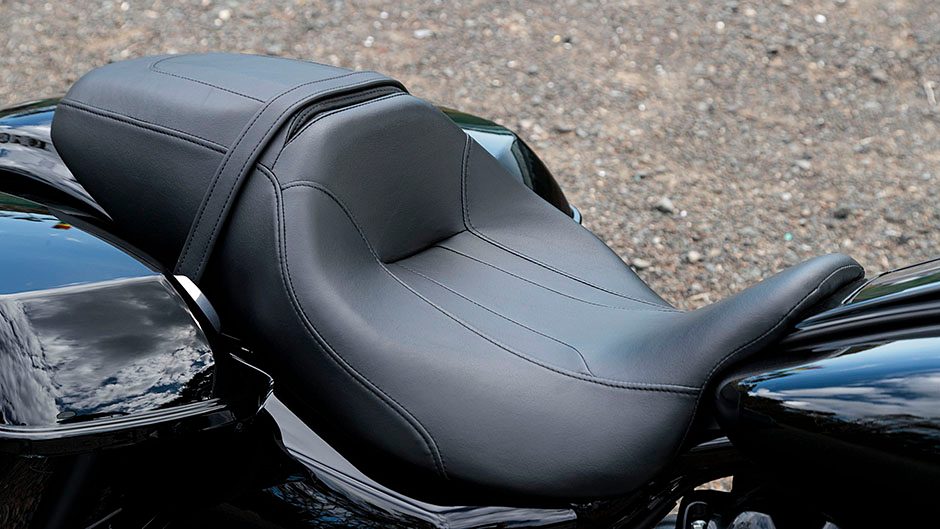
After the top-heavy Guzzi FF, we couldn’t believe how easy this was to manoeuvre at slow speed. Weight is similar for the two, and while 0-100 acceleration favours the Harley the 80-120 figure is quicker for the Guzzi, likely the result of its shorter gearing. They feel about as quick as each other on road. For those wondering, it gets to 100 in 5.1sec, the Guzzi 5.25sec. But in most other ways they’re really quite different. One masters on ride, the other is keener to corner, and it’s probably not the one you’re thinking!
Despite the slammed rear end look of the Harley, this is the one that gets down, easily and readily with all that bar leverage, takes a decent lean angle and holds it there regardless of the road surface beneath. Touch down? You have to be trying on this to get the underneath of the footboards to spark up. No, really. Looking at that low-flying rear end, you’d not credit this would be handy in corners. But it is, and handily kept on the tail of a couple of sports bike during one ride we undertook.
We’re still not convinced by separate indicator switches left and right. BMW tried these for a while but reverted to conventional trafficators. The right one is a pain to activate; that switch block should be bare, starter aside, so the right hand can concentrate on throttle-twisting duties. At least the indicators are self-cancelling, providing the bike heels over left or right. The steering lock is generous and the actual steering lock is nicely sited for ease of use. Mirrors have short stems and only ever give a clear image of what’s behind. The horn is usefully loud too. Build quality is sweet.
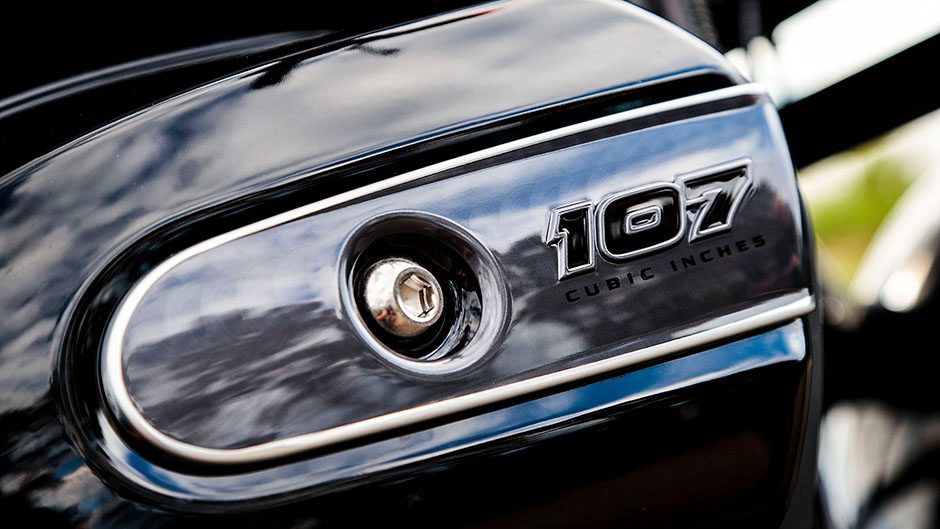
There are a few things the RKS could do better. Front disc brakes aren’t radial like those on the Guzzi, and despite being linked with the rear they don’t have quite the sheer stopping power of the Italian, especially the front brake when used alone. Nor is the lever adjustable. The clutch is a bit heavy to operate too, though that’s only really an issue in heavy traffic. The main drawback of the slammed rear end is ride quality; it’s okay on smooth surfaces but too firm for the most part on our lumpy, bumpy Kiwi roads, and over short-edged bumps ride can be harsh, unlike with the Indian competition.
However, that doesn’t handle with the panache of the Harley. Perhaps the one aspect that says it all about the RK Spesh is that I just wanted to get out there and ride it again. The ease and brute strength of the powertrain, the noise and the accomplished dynamics are enough of a drawcard to negate the ride issue, especially if you’re just doing hour-long jaunts between breaks.
Best Harley I’ve ridden ever? For sure, by a mile, firm ride aside. If you’re plying anything other than smooth highway or hotmix, check out the similar but plusher Road King instead.


